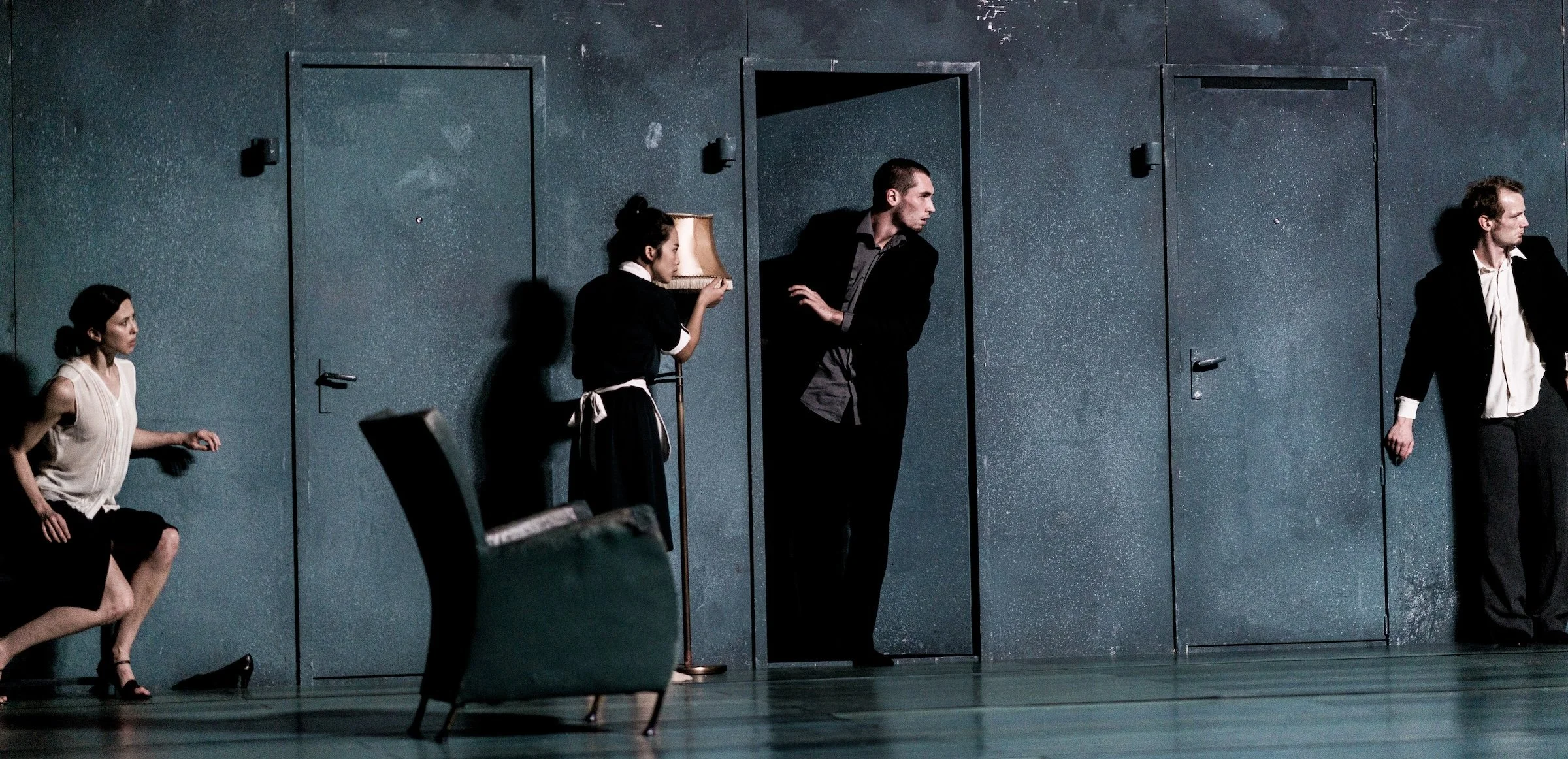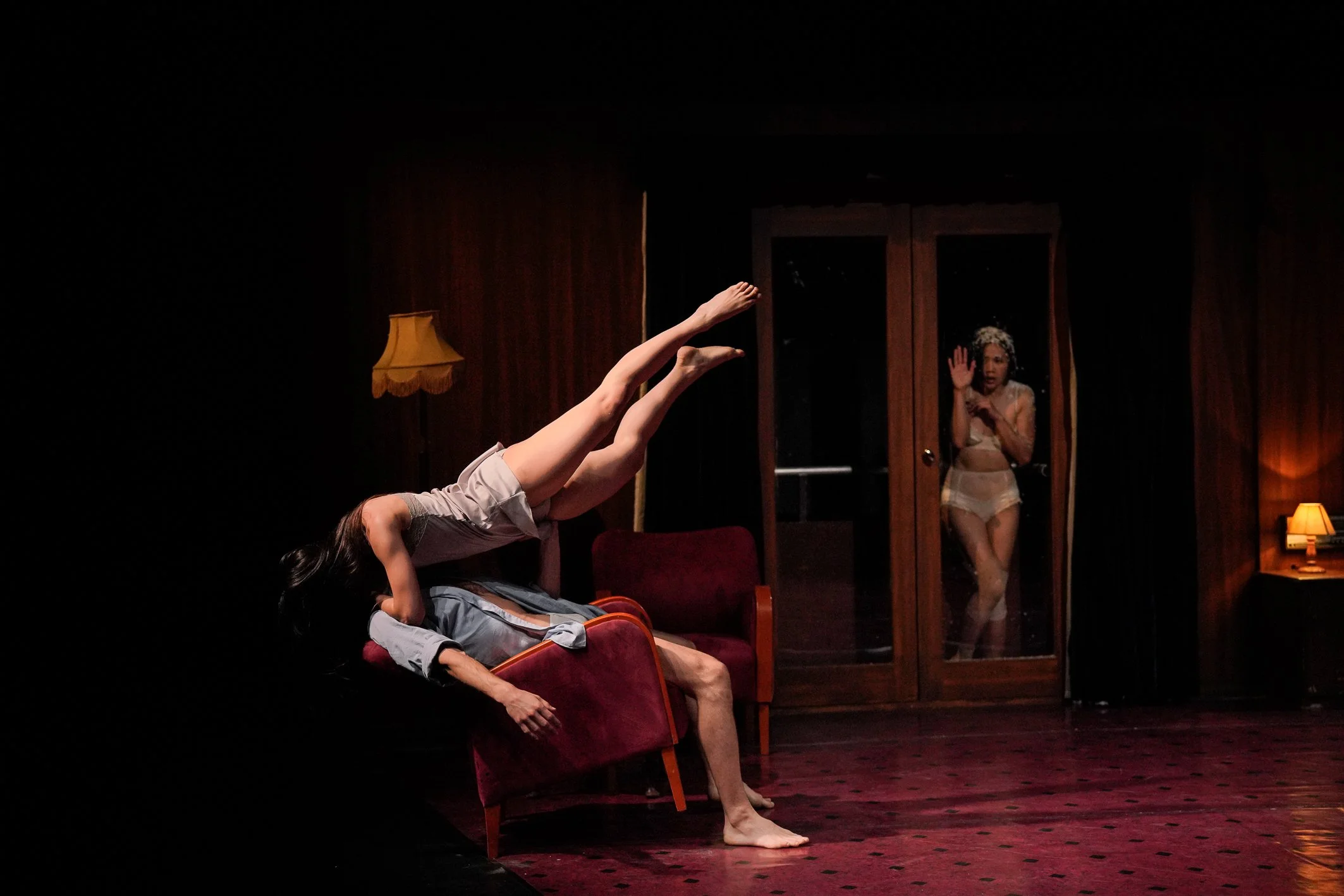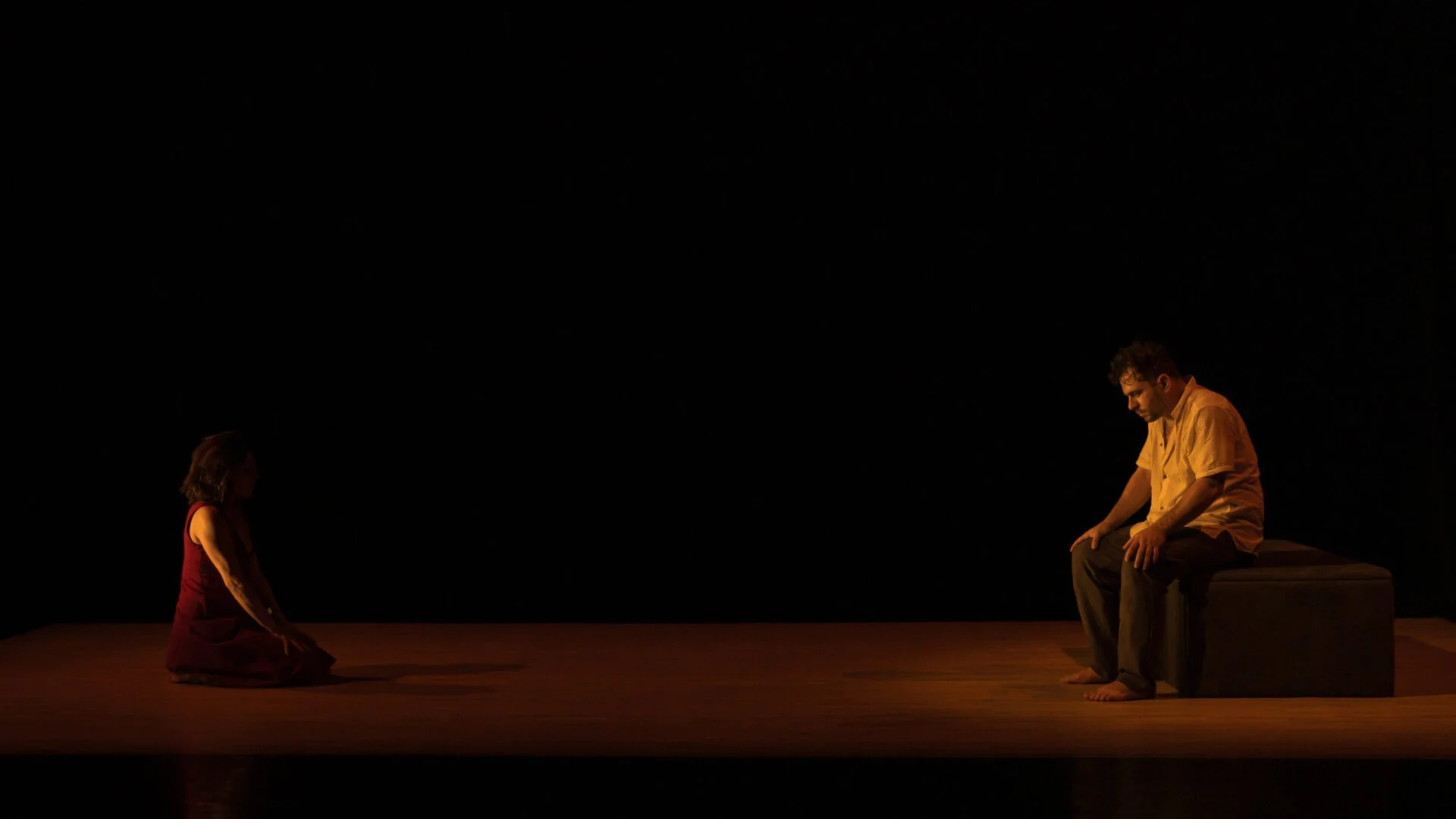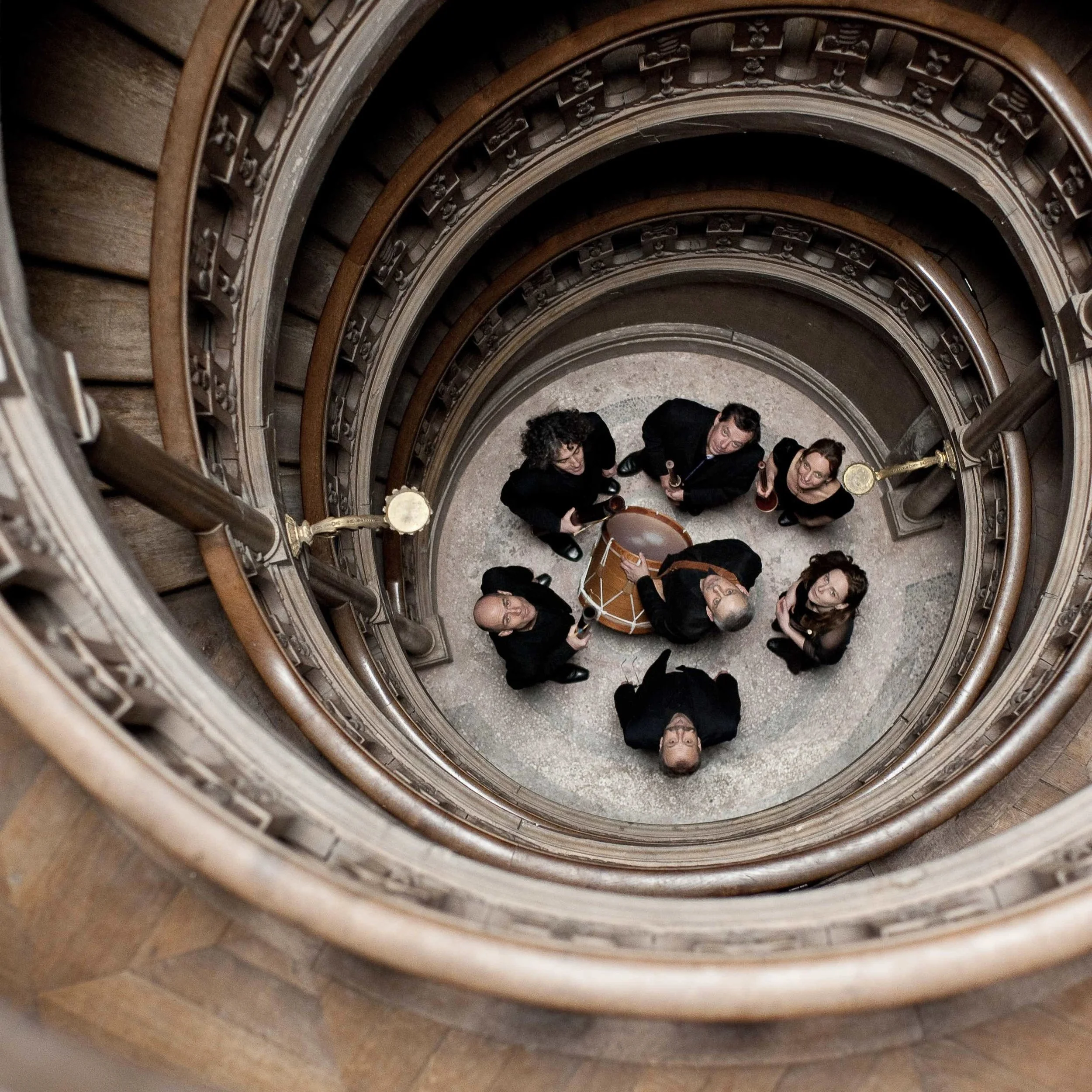Belgium's Peeping Tom draws on cinematic artistry, memories, and nightmares for Diptych
Olivier Award–winning dance-theatre troupe blends physically pummelling choreography with surreal worlds that blur reality and fantasy
Peeping Tom’s Diptych. Photo by Maarten Vanden Abeele
DanceHouse presents Peeping Tom’s Diptych at the Vancouver Playhouse from April 24 to 26
BRUSSELS-BASED DANCE company Peeping Tom’s stunning trick is to create a hyperreal, easily recognizable setting and then kick it into a strange, dreamlike realm.
Take “The Missing Door”—one half of the company’s Diptych, set to hit the DanceHouse program on the Vancouver Playhouse stage. It opens in a dim hallway containing an everyday desk and armchair. The characters are surrounded by doors, but it soon becomes distressingly clear that they can’t get out. From there, the duo Gabriela Carrizo and Franck Chartier stretch and distort time and reality in chilling ways, generous doses of dark humour and Foley effects heightening the suspense.
“We love that: to have something very concrete and realistic, and transform it or perturb it a bit, and then come back to the reality,” co–artistic director Chartier tells Stir from a tour stop in Ottawa, where Diptych just received thunderous ovations from National Arts Centre audiences.
Mixing the surreal themes with jaw-dropping acrobatic dance, they have been wowing crowds around the world. It’s the kind of work that’s going to connect with fans of Crystal Pite’s brilliant dance-theatre visions (in fact, the sinister lighting is by her collaborating designer Tom Visser), though Chartier and Carrizo conjure Lynchian, cinematic-feeling worlds that are distinctive in their own right. The Olivier Award–winning company is a must-see for audiences who crave striking visual settings and mind-expanding ideas in their virtuosic dance.
Chartier reveals that the team begins its process with the set, building a small maquette where they can start to plot out movement and story. In this case, the other half of Diptych, “The Lost Room”, is a boat’s cabin suite.
From there they start creating characters and drawing effectively on filmmaking techniques.
“In cinema you can zoom very close to the woman or the man onstage and go deeper into their thoughts, and we try to do that onstage too, with the lighting, to focus it on the person and use sound to come into her mind and to see what she sees, what she thinks, to see her dream, her nightmare,” Chartier explains. “That’s one of the reasons we always use really realistic sets: to have this kind of feel of identification with the audience. And then suddenly to zoom in the head of this woman or this man and to see the situation start to become strange. And this contrast between the reality and this strange situation makes it maybe more frightening.”
Peeping Tom’s Gabriela Carrizo and Franck Chartier. Photo by Jesse Willems
Beyond zoom-ins, Peeping Tom also plays with physicalized slow motion, fast-forwarding, and rewinding—drawing not just on cinematic techniques, but on the way memories can loop, fragment, and replay in your head. Especially traumatic ones. Chartier reveals he draws, sometimes, on the way he experiences one of his darkest memories: of a moment, in his childhood, of witnessing his father hit his mother.
“I think we work a lot, when we’re creating pieces, to explore some trauma that we have, or some moment that we find strong or humiliating—to extend it, to suddenly make it in slow-mo, to make it more painful or to make it more horrible or to make it more humiliating,” he explains. “We might zoom in on a detail of this moment—this hit, for example. You make something small important, and then you zoom out and reverse the moment.
“Gabriele and I are quite attracted to family stories and talking about taboos in the family—stuff that we never talk about,” he adds.
“We work a lot on that: on memories, on flashbacks of trauma or sadness. These are the family problems and stories that we can hear everywhere. Or they can be more political: we are listening to everything that’s happening in the world and trying to translate it onstage.”
“The Lost Room”, which dovetails strikingly with “The Missing Door” onstage, alludes mysteriously to just such an unspeakable tragedy.
And so there are big, exciting ideas that play out in Diptych—but there is also dance at its most physically demanding. With a ballet background that includes three years at Maurice Béjart’s Ballet du XXe Siècle, Chartier loves to ground his movement in virtuosity and technique. The troupe recruits elite dancers from around the globe.
Just as Chartier and Carrizo go beyond the barriers of reality and time, they break through boundaries of movement as well. “You are constantly pushed to your limits, and then you have to go over your limit and push your body farther,” the affable artist says. “And I think this also is interesting because then you destroy this image of the human and you transform it.” ![]()
Peeping Tom’s Diptych. Photo by La Biennale




































